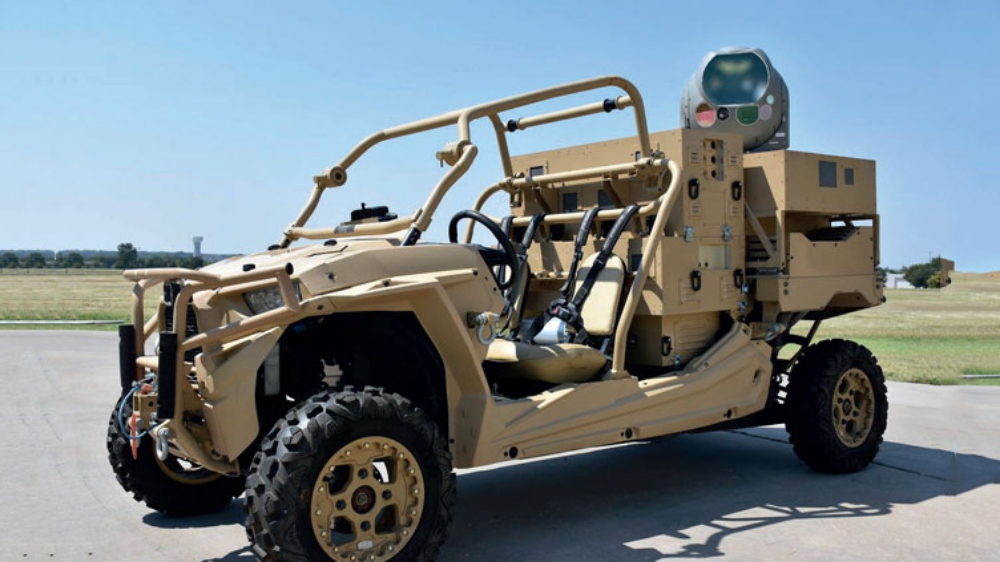Among the companies that have been working on counter-UAS (C-UAS) technologies is Raytheon, drawing on its long experience in the air defence arena, and associated sectors such as air traffic management. The company has not only been working on detection and tracking systems, but also on a range of technologies that can disrupt or destroy small UAVs and drones.
In 2015, Raytheon acquired Tucson-based Sensintel, and with it the Coyote UAV. Launched pneumatically from a tube, the tandem-wing Coyote offers a one-hour endurance, and can be configured for reconnaissance missions. It is also used for hurricane-hunting duties by the National Oceanic and Atmospheric Administration (NOAA), and has been demonstrated in swarm mode as part of the US Navy’s LOCUST (low-cost UAV swarming technology) programme.
Through the addition of an RF sensor and a proximity-fuzed warhead, Raytheon has produced a C-UAS version of the Coyote, which has been selected by the US Army and is now being delivered.
The Coyote is partnered by Raytheon’s KRFS (Ku-band Radio Frequency System) AESA radar, which detects small UAS threats and provides targeting information for the Coyote.
The Coyote system being delivered is in Block 1B standard, but further development is being pursued, leading to a Block 2 Coyote that adds improved sensors and rocket motors to significantly increase manoeuvrability. Another hard-kill option is the Stinger short-range surface-to-air missile.
Raytheon has been reworking Stingers for the US Army, adding a proximity fuze to allow them to engage drone/small UAS targets.
Raytheon’s other C-UAS technologies could be combined to offer a layered defence against UAS threats. Coyote and the ‘Kurfs’ radar offer a long-range hard-kill capability, and can be used to break up swarm attacks. Drones that make it through the Coyote layer could then be engaged by other hard-kill technologies such as high-energy laser (HEL), a highly directional system that literally burns up drones, and high-power microwave (HPM), which covers a much wider sector and destroys the drone’s internal electronics.
In December 2018, Raytheon demonstrated HEL and HPM against drones during the Army’s MFIX (Maneuver Fires Integrated eXperiment). The laser downed 12 Class I and II drones, while the microwave accounted for 33, including the demonstration of its anti-swarm capability, in which several drones were brought down simultaneously.
By the nature of the threat, the hard-kill option becomes less attractive as the drone nears its target, so any ‘leakers’ that survive are best engaged with soft-kill options. A number of control disruption technologies are available, including the interception and jamming of command/control links. In such instances, the drone will normally be programmed to land immediately, rendering it safe. A benefit of being able to intercept the command link is the ability to locate the operator. In cases where the drone is operating entirely autonomously, Raytheon’s Windshear technology employs cyber techniques in which the vehicle’s internal control system is hacked and taken over.
Source: Jane’s 360

